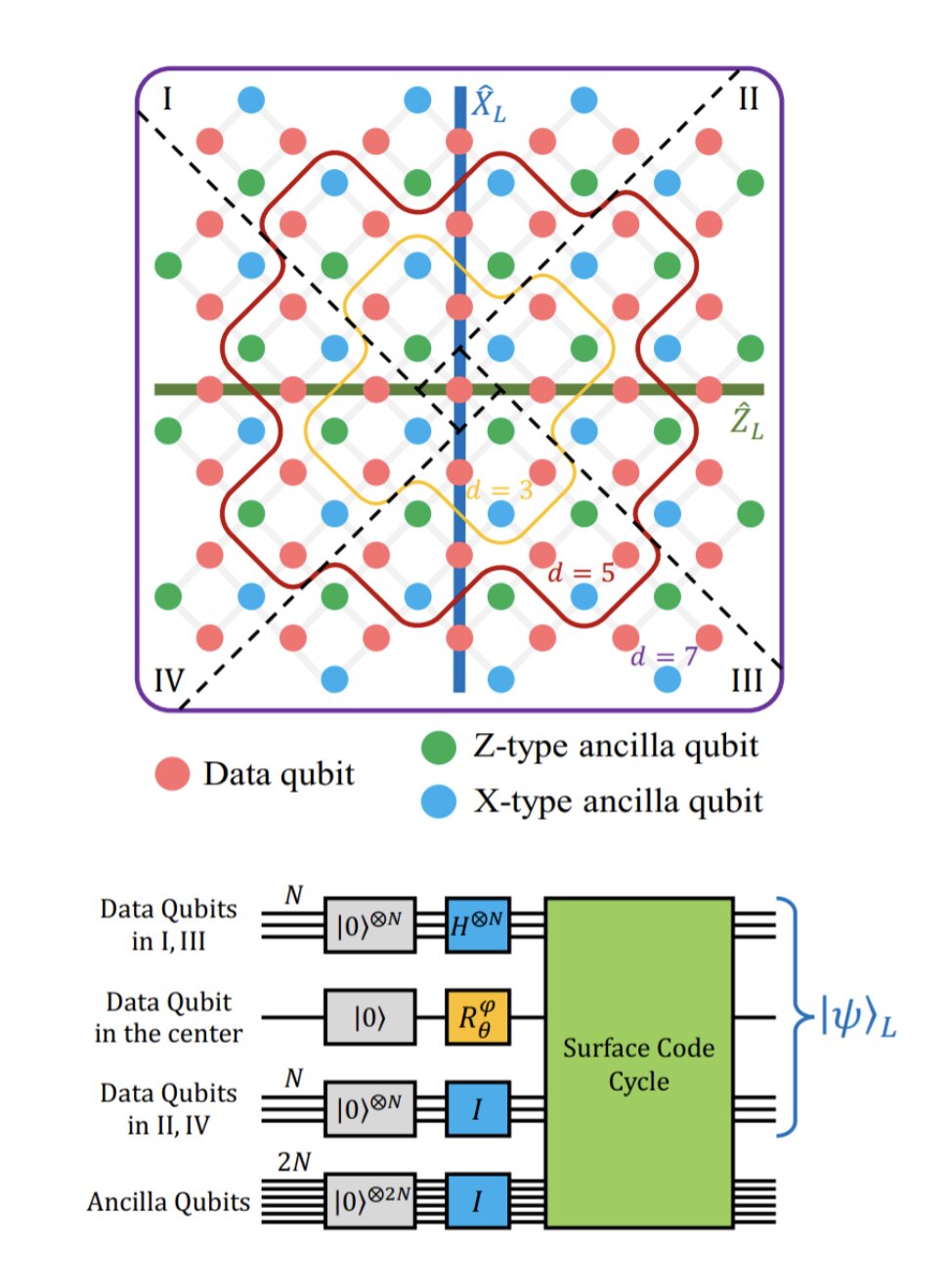Quantum computers have the potential to outperform conventional computers on some tasks, including complex optimization problems. However, quantum computers are also vulnerable to noise, which can lead to computational errors.
Researchers at University of Science and Technology of China, the Henan Key Laboratory of Quantum Information and Cryptography and the Hefei National Laboratory recently demonstrated the preparation of a logical magic state with fidelity beyond the distillation threshold on a superconducting quantum processor. Their paper, published in Physical Review Letters, outlines a viable and effective strategy to generate high-fidelity logical magic states, an approach to realize fault-tolerant quantum computing.
“We have a long-term plan in the field of quantum error correction,” Prof. Xiao-Bo Zhu, co-author of the paper, told Phys.org. “Following the completion of our previous work on a distance-3 surface code for repeated error correction, we consider the next focus to be on the preparation of logical magic states.”
The ultimate objective of the recent research by Prof. Zhu and their colleagues is to realize robust, fault-tolerant, universal quantum computing. The preparation of logical magic states is a key step to implement non-Clifford logical gates, which in turn lead to the attainment of fault-tolerant quantum computing.
“In simple terms, the basic idea of our protocol is to first inject the state to be prepared into one of the qubits in the surface code, and then ‘propagate’ the state information to the entire surface code, thereby achieving a logical state preparation,” Prof. Zhu explained. “In this protocol, the choice of the inject position of the state to be prepared and the initialization states of other qubits is important.”
2023-12-28 07:00:04
Link from phys.org rnrn
